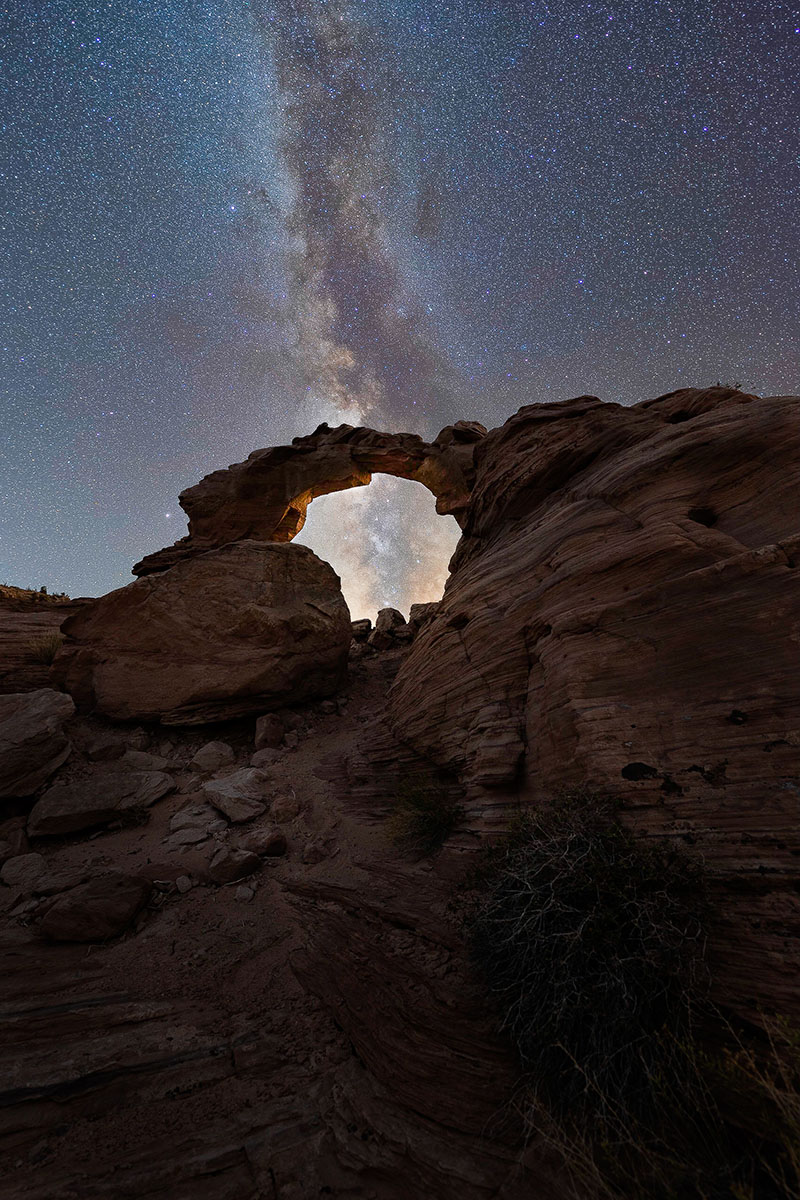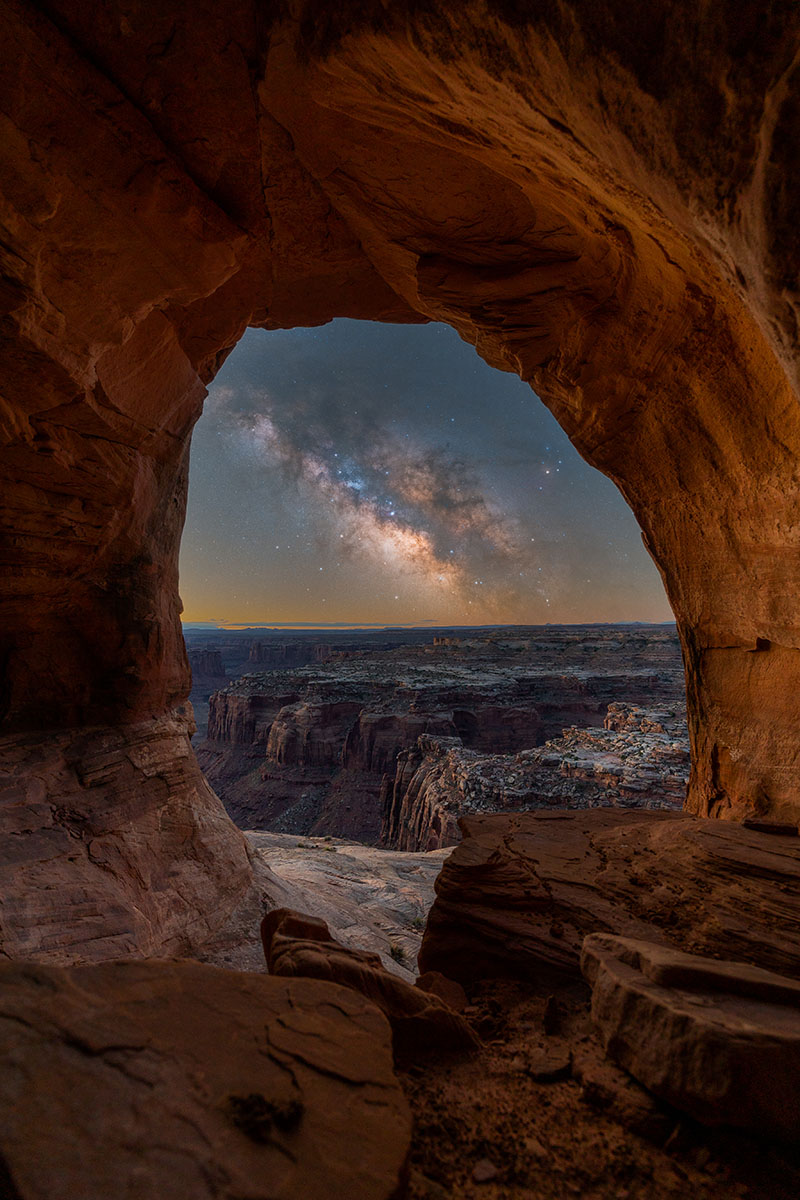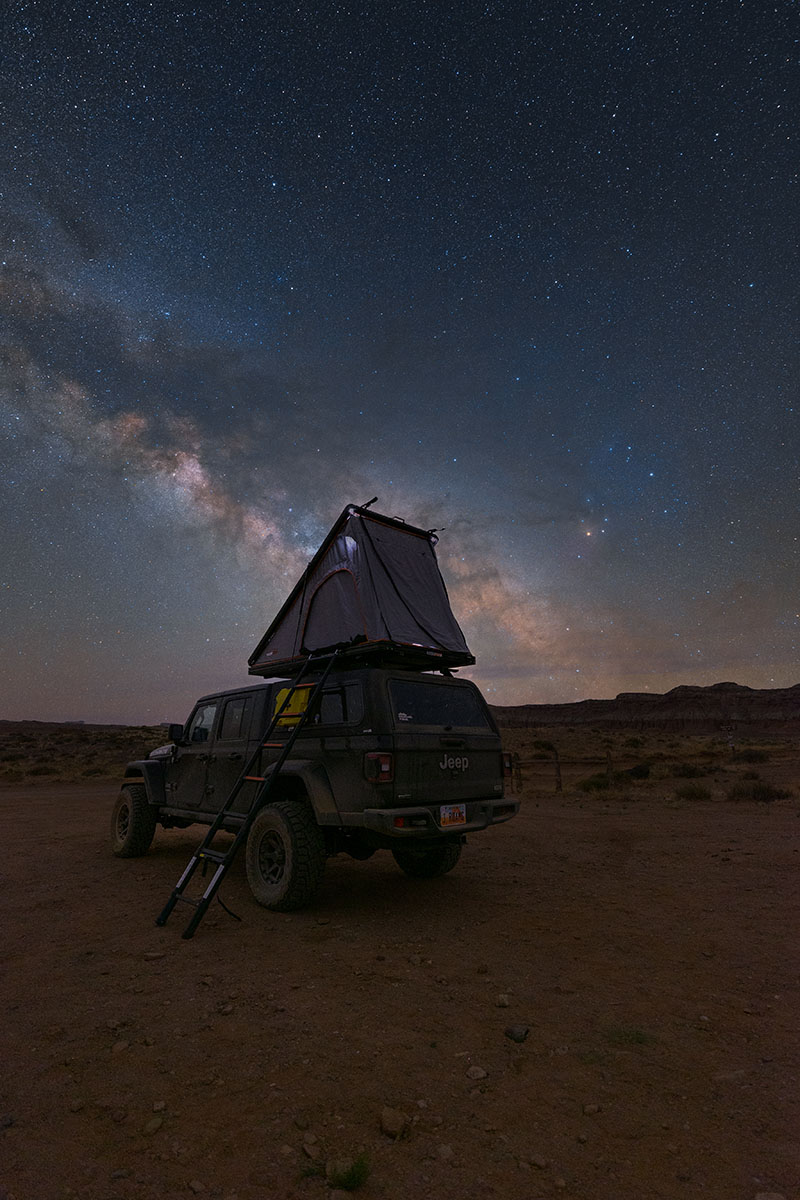Astrophotography can be challenging, but with the right techniques, you can capture stunning images of the night sky. In this post, we cover 3 pro tips for shooting the Milky Way, from choosing the right gear to mastering composition. Whether you’re just starting out or looking to improve your shots, these tips for astrophotography will help you get the most out of your sessions and elevate your night-sky images.
Images and Tips by Jonny Hill
What You’ll Learn in This Article:
- How to choose the right wide-angle lens for stunning Milky Way shots
- Why moon phases matter and how to plan your shoot accordingly
- The importance of foreground elements in creating dynamic compositions
- Pro tips for capturing breathtaking night skies
TIP 1: USE A WIDE LENS

Use an ultra-wide-angle lens like the Tamron 17-28mm F/2.8 Di III RXD (Model A046) or 11-20mm F/2.8 Di III-A RXD (Model B060) zooms, or the Tamron 20mm F/2.8 Di III OSD (Model F050) prime. Shooting at 20mm or wider will help you capture as much of the milky way core as possible, and the distortion of a wide-angle lens helps create dramatic images.
TIP 2: PLAN ACCORDINGLY WITH THE MOON PHASES

The moon is one of the brightest natural light sources in the night sky—and while it’s beautiful, it can be a major obstacle when you’re trying to photograph stars or the Milky Way. Even a half-full moon can wash out faint celestial details and reduce contrast in your images. To capture clean, high-contrast shots of the night sky, aim to shoot during the new moon phase or within a few days on either side of it, when the sky is at its darkest.
Use astronomy apps like PhotoPills, Stellarium, or Sky Guide to track moon phases, moonrise/moonset times, and Milky Way visibility. Planning your shoot around a moonless night will dramatically improve your chances of getting crisp, detailed shots filled with stars and galactic texture.
TIP 3: ADD A FOREGROUND ELEMENT

A starry sky is stunning on its own, but incorporating an interesting foreground element can transform your photo from a simple night shot into a compelling story. Foreground subjects create depth, scale, and context, drawing the viewer into the image and providing a sense of place.
Your foreground can be as simple as a silhouetted tree, a wildflower, or a rocky outcrop. For more dynamic results, try using reflective surfaces like a lake or puddle to mirror the stars, or include structures such as a tent, cabin, or even a person with a lantern to add mood and narrative.
When scouting locations, look for strong shapes and lines that will complement the movement of the Milky Way across the frame. A well-chosen foreground not only enhances visual interest but also helps anchor the cosmic drama of the night sky in the world we know.
Capture the Night Like a Pro
Astrophotography is as much about preparation as it is about creativity. By using a wide-angle lens, planning around moon phases, and incorporating compelling foreground elements, you can dramatically enhance the quality and impact of your night sky images. With these pro tips for astrophotography from Jonny Hill, you’re well on your way to capturing the Milky Way in all its brilliance. Get out under the stars, experiment with your gear, and let the night sky inspire your next masterpiece.
Learn more about wide-angle lenses for astrophotography at an authorized Tamron dealer in your area or visit the TAMRON Store today.
More Photo Tips | Watch Videos | Learn More About Tamron Lenses | Photo Gallery